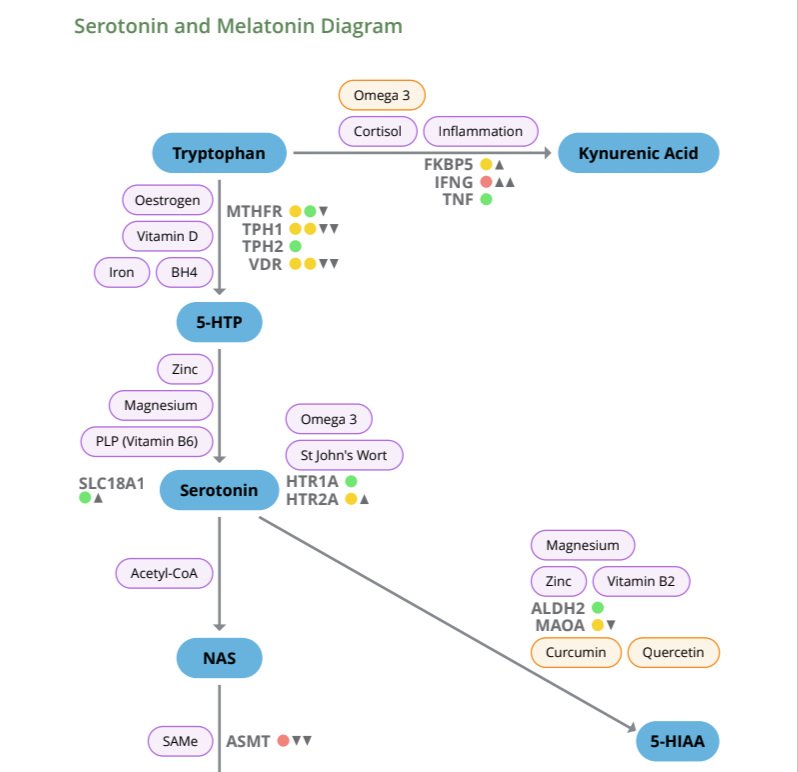Genes Included
Serotonin: ALDH2, HTR1A, HTR2A, MAOA, MTHFR, SLC18A1 (VMAT), VDR and TPH1 &2
Kynurenic Acid: FKBP5, IFNG and TNF
Melatonin: ASMT and MTNR1B
Dopamine: ALDH2, COMT, DRD2, MAOB, MAOA, MTHFR, OPRM1, SLC6A3 (DAT), TH and VDR
Adrenergic: ADRB2, COMT, DBH, MAOA, PNMT, SLC6A2 (NET) and SLC18A1 (VMAT)
GABA: ALPL, GAD1, GAD2 and GABRA2
Cannabinoid: CNR1, TRPV1 and FAAH
All of the Lifecode Gx reports include
personalised, colour coded genotype results
visual pathway presentation to enable interpretation of SNP results in context
gene function and SNP impact descriptions
clinically relevant SNPs
nutrient and other epigenetic impacts
links to research evidence


